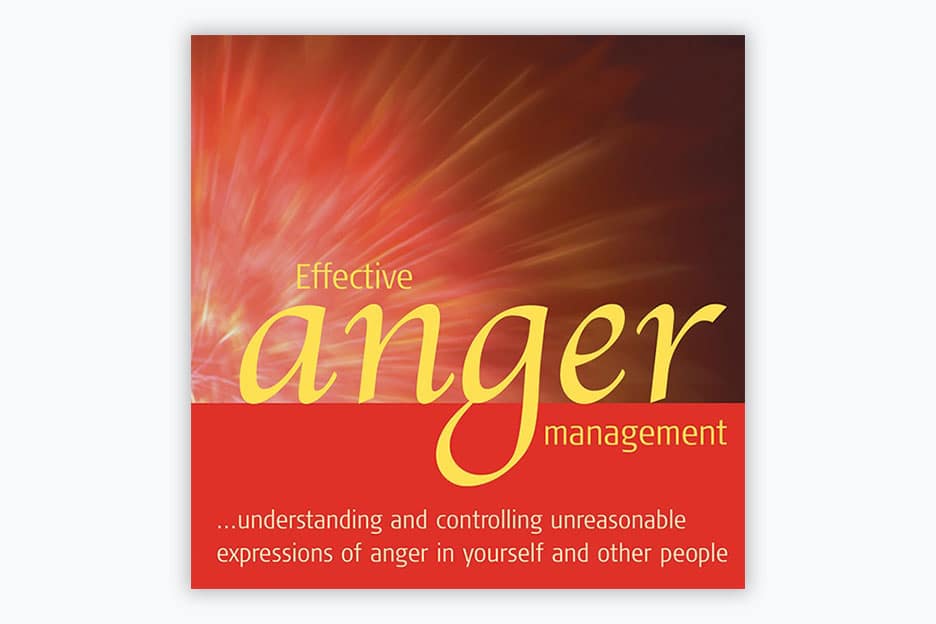8 essential tips for managing anger
Pure anger can be terrifying to behold in others and totally overwhelming when it erupts in ourselves. Anger is the positive emotion we draw upon to defend ourselves, our family and friends. In appropriate circumstances, when under attack for example, it is vital to access it. But, although it evolved as a defensive survival mechanism, the inappropriate expression of anger is debilitating and dangerous. When it flares up uncontrollably, which in our stressful modern world happens all too often, it indicates an anger disorder that needs addressing.
Time to take charge of anger
If you or someone you know often appears mentally unhinged by frequent outbursts of anger that they feel powerless to control, there are many techniques and exercises that can be deployed to defuse this powerful emotion. Some exercises can be used the minute anger starts to overtake you and some aim to help you understand and defuse the source of anger whilst in a more calm and reflective state of mind.
Here are eight essential tips for controlling and managing anger:
1. The moment you feel anger rising, do 7-11 breathing
Because anger is part of our ancient survival mechanism – the fight or flight response – it almost instantly produces a range of physical symptoms as your body instinctively gets ready for action. Adrenalin is secreted into the bloodstream, we breathe faster, blood pressure rises, our digestion is temporarily suspended and men experience a surge in testosterone – all this is fuelled by the stress hormone cortisol, which pumps us up whilst lowering the immune system. Anger needs to be discharged, and if it isn’t discharged by an action (shouting, screaming, running, attacking) it will be dealt with at night during dreaming. But how can you tackle anger in the moment and de-rail powerful and uncontrollable anger?

2. Take some vigorous exercise
Exercise is a perfect way of using up aggressive or angry energy whilst
Instead of running the angry situation through you head, use the time to practice mindfulness or solve some other problem. If this is tough for you, it’s best to choose competitive or team exercise where you have to concentrate on the game or what the opposing team will do.
3. Challenge negative thoughts
Use the ABC method to challenge your negative thoughts: Awareness, Block, Challenge.
Try to become aware of your negative thoughts rather than just letting negative ‘self talk’ rattle past in your brain. If you write down all these thoughts, you may be shocked at how many can occur in a typical day.
Once pinpointed, block out the thought by saying strongly to yourself, “No, no angry thoughts, I’m not allowing that to run through my brain.”

After you have done ABC and stopped yourself getting caught up in thoughts that usually happen in the back of your mind without being challenged, consciously focus on something else, do 7-11 breathing or think of something nice you are looking forward to – anything positive that directs your attention away from the angry thought.
4. Go one step further – reframe your thoughts!
When you have a negative thought about someone or something that has (or hasn’t yet) happened, instead of just noticing it, try to think of several different explanations for it rather than the first knee jerk reaction that comes to mind. This exercise can be a challenge as, when overwhelmed by the black and white thinking of high emotion, it takes a lot of self-control to consciously change your perspective and see the bigger picture. With practice however, it can really help to de-rail angry thoughts quickly and lower your stress levels. Reframing is more effective than simply ‘challenging negative thoughts’, as it lets you explore different options.
5. Check to see if post-traumatic stress is causing the anger
Traumatic memories do not fade like normal memories. They are usually connected with a life threatening or other serious event and are more deeply embedded in the brain as a ‘survival template’. If they are not treated they may continue to fire off strong emotional reactions such as panic attacks and violent anger outbursts at inappropriate moments and thereby cause trouble for the rest of the sufferer’s life. You can find out more about treating post-traumatic stress disorder here.
It is usually easily dealt with, however horrific the original trauma was.
6. Do you experience compulsive anger in particular situations? Check for a molar memory
Compulsive, unreasonable and uncontrollable anger in a certain specific situation could be indicative of a ‘molar memory’. Molar memories are
The good news is that molar memories can be dissolved fairly simply once you understand the process behind them. Many people have freed their lives from debilitating anger once they understand that a molar memory is behind it.
7. Do an emotional needs audit
Most of our stresses in life come from our emotional needs (or ‘human givens’) not being met.
When you have a quiet moment, it’s worth doing an ‘emotional needs audit’ to look at how well your emotional needs are being met. Is it possible that stress about your unmet emotional needs is leading to anger?
8. Inform yourself about anger

Do you need more help?
Complex and severe anger problems, even those deriving from trauma or PTSD, can be helped with the appropriate therapy. Please check out our Professional Register of Human Givens Therapists for fast, effective therapy.
Human Givens College also offer an online course, Effective Anger Management, which helps provide insights into what triggers your own anger – and how to control it, explores the Five Myths about anger, offers important information about the effects of anger on our minds and bodies and much more.





